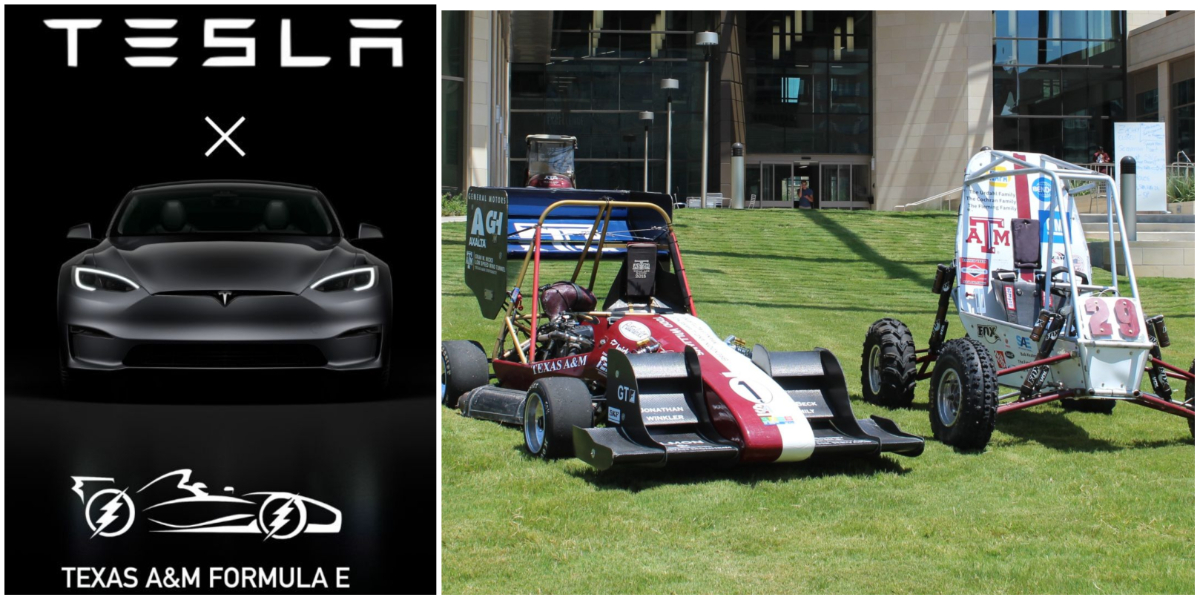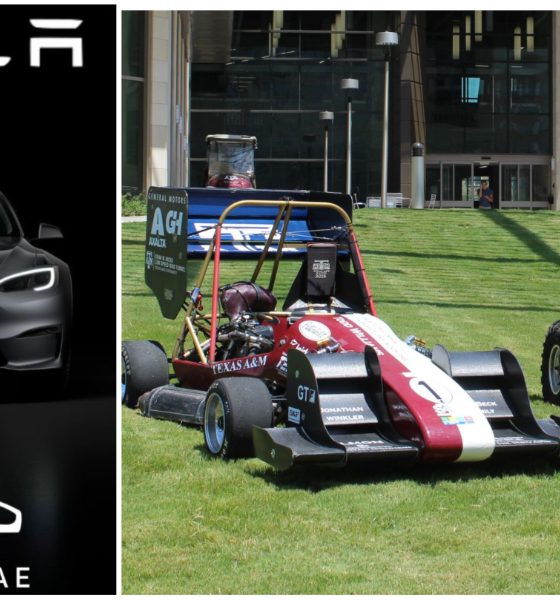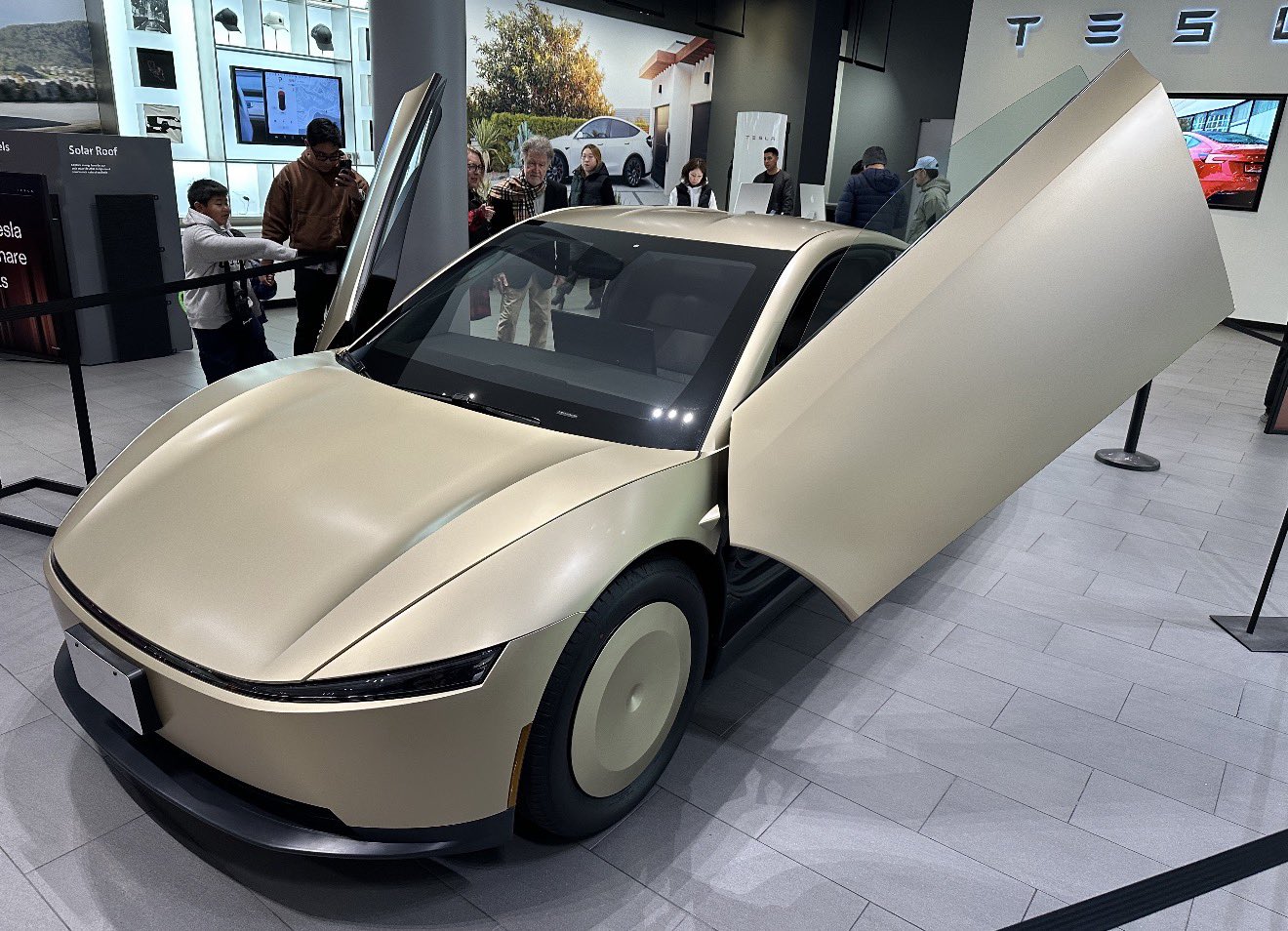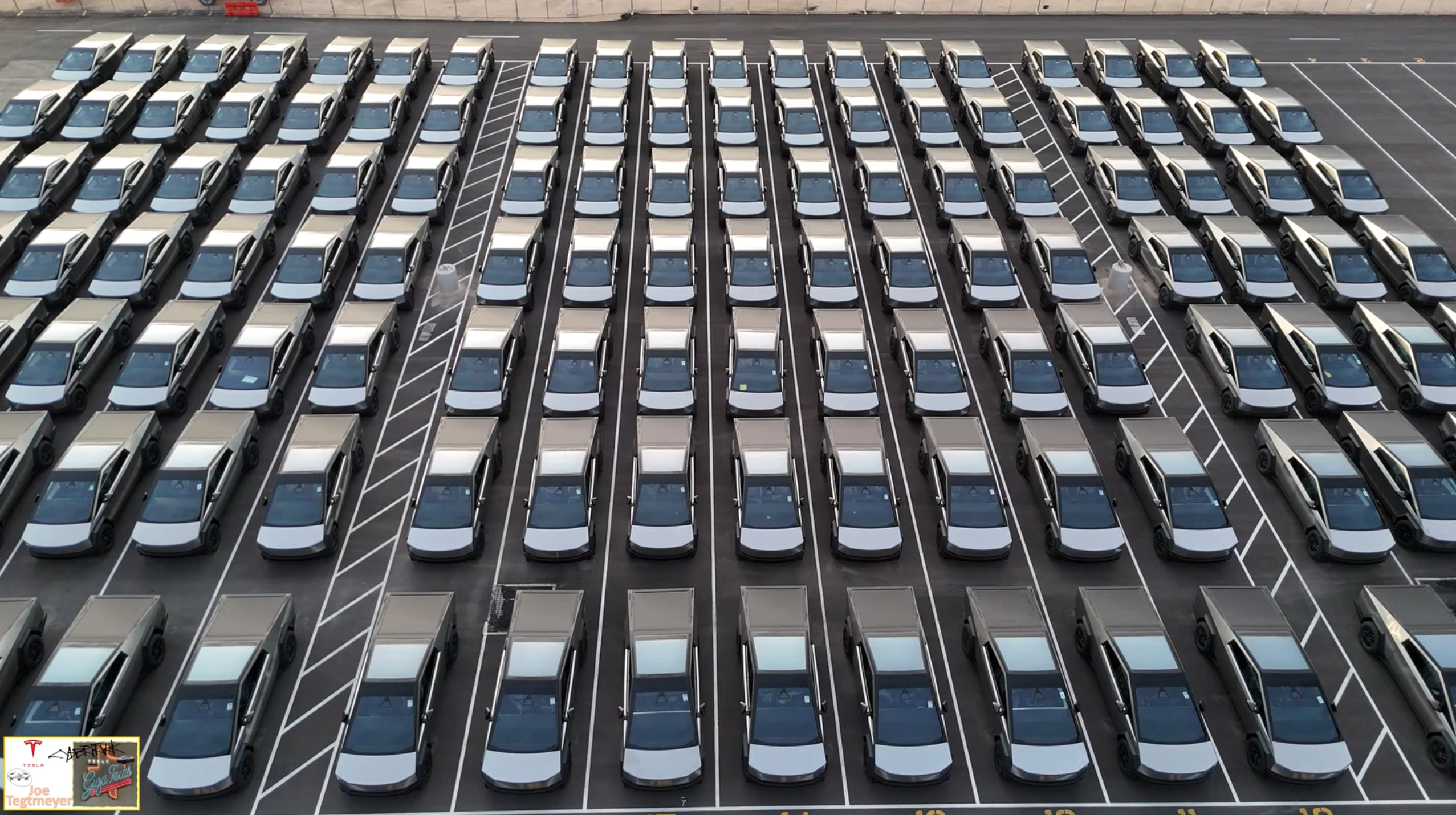

News
Tesla takes first step in motorsports, sponsors Texas A&M EV racing team
Texas A&M University’s Electric Formula SAE team is being sponsored by Tesla for the upcoming racing season, the team told us in an interview.
Formula SAE is a racing series held by the Society of Automotive Engineers, typically competed in by college teams that put together a single-seater racecar under strict engineering limitations. With the racing series’ new electric variation, Tesla is getting involved and sponsoring a team from Texas A&M University.
Teslarati got a full breakdown of the team, the Tesla sponsorship, and the racing series generally from Gerry Mullins, the Project Manager for the team. However, Mr. Mullins clarified that the Tesla sponsorship is one of many; General Motors, Toyota, and Caterpillar, just to name a few.
Tesla specifically will be supplying the team with 10kWh of battery cells. However, much like the rest of the racecar, the battery pack will have to be custom-made. The students design and construct the vast majority of the vehicle according to guidelines set by SAE. And Texas A&M has an even more arduous design process, as they use a “single-year design cycle,” meaning they design a completely new car every year.
Restrictions for the vehicle design can affect everything from the battery (its capacity and voltage), the motors (their voltage and output), the body of the vehicle (conforming with dimension constraints), and much more. In one of the most extreme examples of a design challenge, the “engineers must produce proof, often using finite element analysis showing that their mounts will withstand a 40g impact…” exclaimed Mr. Mullins.
These engineering challenges can weed out countless teams. Mr. Mullins states, “…of the about 80+ teams that showed up [to competition], less than five were deemed safe enough to compete in the dynamic events.”
The competition entails numerous “tests”/racing events in which the cars must compete. Each of these tests accumulates to find the top car/team. The most notable is the “endurance event” that, in the case of the EVs, is 22km long, but other events include autocross, skidpad, acceleration, and fuel economy for gas vehicles. The competition also includes a business presentation to judges and a cost & manufacturing analysis event (judging the feasibility of their car).
For this year’s design, the team has opted to focus on lowering mass and lowering the center of gravity. However, these design choices are just general guidelines, and the team will have to make countless other design decisions before heading to competition. The team’s first race is in June of next year in Michigan.
Despite the team’s lack of history at the school, it has quickly garnered quite the following and an incredibly competitive application process to join the 30-person team. For the 2023 season, the team received just over 200 applicants, almost entirely from the University’s engineering school.
The Texas A&M team is one of countless teams from around the world competing in SAE’s newest racing series, exemplifying the fantastic engineering we see in electric vehicles and the new passion that has begun to surround them. And if you would like to see this student project continue, I would encourage you to consider sponsoring their new team. It can only help these students as they hopefully continue to better electric vehicles in their careers later in life.
What do you think of the article? Do you have any comments, questions, or concerns? Shoot me an email at william@teslarati.com. You can also reach me on Twitter @WilliamWritin. If you have news tips, email us at tips@teslarati.com!

News
Wedbush’s Dan Ives sees ‘monster year’ ahead for Tesla amid AI push
In a post on X, the analyst stated that the electric vehicle maker could hit a $3 trillion market cap by the end of 2026 in a bullish scenario.

Wedbush analyst Dan Ives is doubling down on Tesla’s (NASDAQ:TSLA) long-term upside. In a post on X, the analyst stated that the electric vehicle maker could hit a $3 trillion market cap by the end of 2026 in a bullish scenario, thanks to the company’s efforts to develop and push its artificial intelligence programs.
An aggressive valuation upside
Ives, Wedbush’s global head of tech research, stated in his post that Tesla is entering a pivotal period as its autonomy and robotics ambitions move closer to commercialization. He expects Tesla’s market cap to reach $2 trillion in 2026, representing roughly 33% upside from current levels, with a bull case up to a $3 trillion market cap by year-end.
Overall, Ives noted that 2026 could become a “monster year” for TSLA. “Heading into 2026, this marks a monster year ahead for Tesla/Musk as the autonomous and robotics chapter begins. We believe Tesla hits a $2 trillion market cap in 2026 and in a bull case scenario $3 trillion by end of 2026… as the AI chapter takes hold at TSLA,” the analyst wrote.
Ives also reiterated his “Outperform” rating on TSLA stock, as well as his $600 per share price target.
Unsupervised Full-Self Driving tests
Fueling optimism is Tesla’s recent autonomous vehicle testing in Austin, Texas. Over the weekend, at least two Tesla Model Ys were spotted driving on public roads without a safety monitor or any other occupants. CEO Elon Musk later confirmed the footage of one of the vehicles on X, writing in a post that “testing is underway with no occupant in the car.”
It remains unclear whether the vehicle was supported by chase cars or remote monitoring, and Tesla has not disclosed how many vehicles are involved. That being said, Elon Musk stated a week ago that Tesla would be removing its Safety Monitors from its vehicles “within the next three weeks.” Based on the driverless vehicles’ sightings so far, it appears that Musk’s estimate may be right on the mark, at least for now.
News
Production-ready Tesla Cybercab hits showroom floor in San Jose
Tesla has implemented subtle but significant updates to both the Cybercab’s exterior and interior elements.

Tesla has showcased what appears to be a near-production-ready Cybercab at its Santana Row showroom in San Jose, California, giving visitors the closest look yet at the autonomous two-seater’s refined design.
Based on photos of the near-production-ready vehicle, the electric vehicle maker has implemented subtle but significant updates to both the Cybercab’s exterior and interior elements, making the vehicle look more polished and seemingly more comfortable than its prototypes from last year.
Exterior and interior refinements
The updated Cybercab, whose photos were initially shared by Tesla advocate Nic Cruz Patane, now features a new frameless window design, an extended bottom splitter on the front bumper, and a slightly updated rear hatch. It also includes a production-spec front lightbar with integrated headlights, new wheel covers, and a license plate bracket.
Notably, the vehicle now has two windshield wipers instead of the prototype’s single unit, along with powered door struts, seemingly for smoother opening of its butterfly doors. Inside, the Cybercab now sports what appears to be a redesigned dash and door panels, updated carpet material, and slightly refined seat cushions with new center cupholders. Its legroom seems to have gotten slightly larger as well.
Cybercab sightings
Sightings of the updated Cybercab have been abundant in recent months. At the end of October, the Tesla AI team teased some of the autonomous two-seater’s updates after it showed a photo of the vehicle being driven through an In-N-Out drive-through by employees in Halloween costumes. The photos of the Cybercab were fun, but they were significant, with longtime Tesla watchers noting that the company has a tradition of driving its prototypes through the fast food chain’s drive-throughs.
Even at the time, Tesla enthusiasts noticed that the Cybercab had received some design changes, such as segmented DRLs and headlamps, actual turn signals, and a splitter that’s a lot sharper. Larger door openings, which now seem to have been teasing the vehicle’s updated cabin, were also observed at the time.
Investor's Corner
Tesla analyst realizes one big thing about the stock: deliveries are losing importance

Tesla analyst Dan Levy of Barclays realized one big thing about the stock moving into 2026: vehicle deliveries are losing importance.
As a new era of Tesla seems to be on the horizon, the concern about vehicle deliveries and annual growth seems to be fading, at least according to many investors.
Even CEO Elon Musk has implied at times that the automotive side, as a whole, will only make up a small percentage of Tesla’s total valuation, as Optimus and AI begin to shine with importance.
He said in April:
“The future of the company is fundamentally based on large-scale autonomous cars and large-scale and large volume, vast numbers of autonomous humanoid robots.”
Almost all of Tesla’s value long-term will be from AI & robots, both vehicle & humanoid
— Elon Musk (@elonmusk) September 11, 2023
Levy wrote in a note to investors that Tesla’s Q4 delivery figures “likely won’t matter for the stock.” Barclays said in the note that it expects deliveries to be “soft” for the quarter.
In years past, Tesla analysts, investors, and fans were focused on automotive growth.
Cars were truly the biggest thing the stock had to offer: Tesla was a growing automotive company with a lot of prowess in AI and software, but deliveries held the most impact, along with vehicle pricing. These types of things had huge impacts on the stock years ago.
In fact, several large swings occurred because of Tesla either beating or missing delivery estimates:
- January 3, 2022: +13.53%, record deliveries at the time
- January 3, 2023: -12.24%, missed deliveries
- July 2, 2024: +10.20%, beat delivery expectations
- October 3, 2022: -8.61%, sharp miss due to Shanghai factory shutdown
- July 2, 2020: +7.95%, topped low COVID-era expectations with sizeable beat on deliveries
It has become more apparent over the past few quarters that delivery estimates have significantly less focus from investors, who are instead looking for progress in AI, Optimus, Cybercab, and other projects.
These things are the future of the company, and although Tesla will always sell cars, the stock is more impacted by the software the vehicle is running, and not necessarily the vehicle itself.








